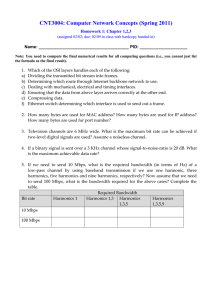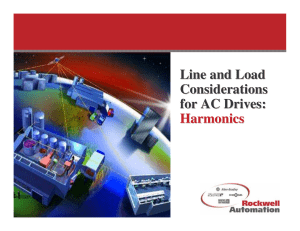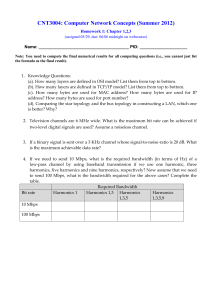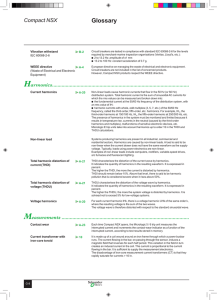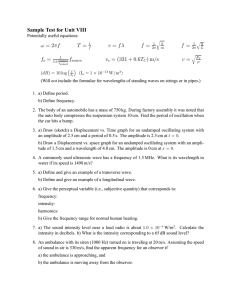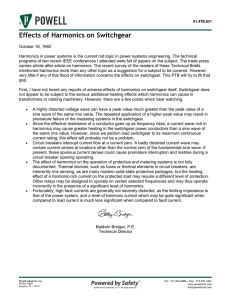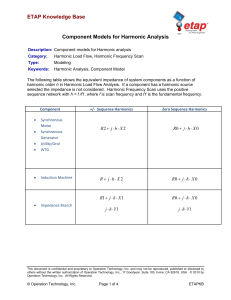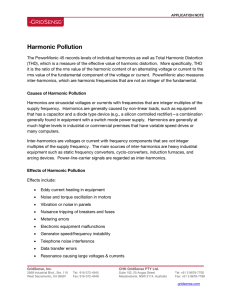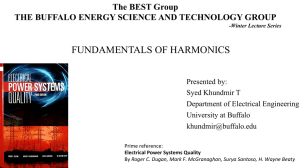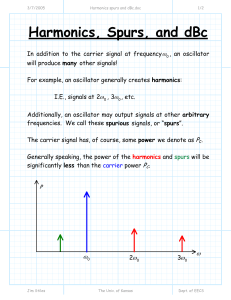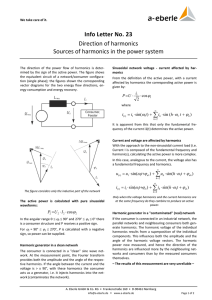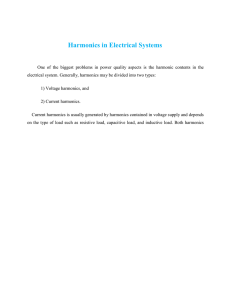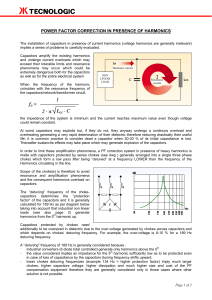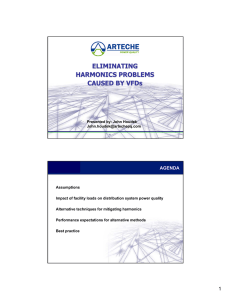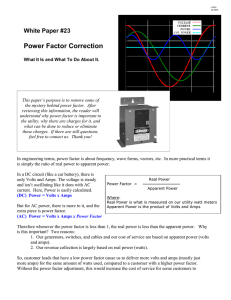Questions: 1- (a) 2.0; (b) (1.5); (c) fully constructive in (a) ;... 6- all odd harmonics
advertisement
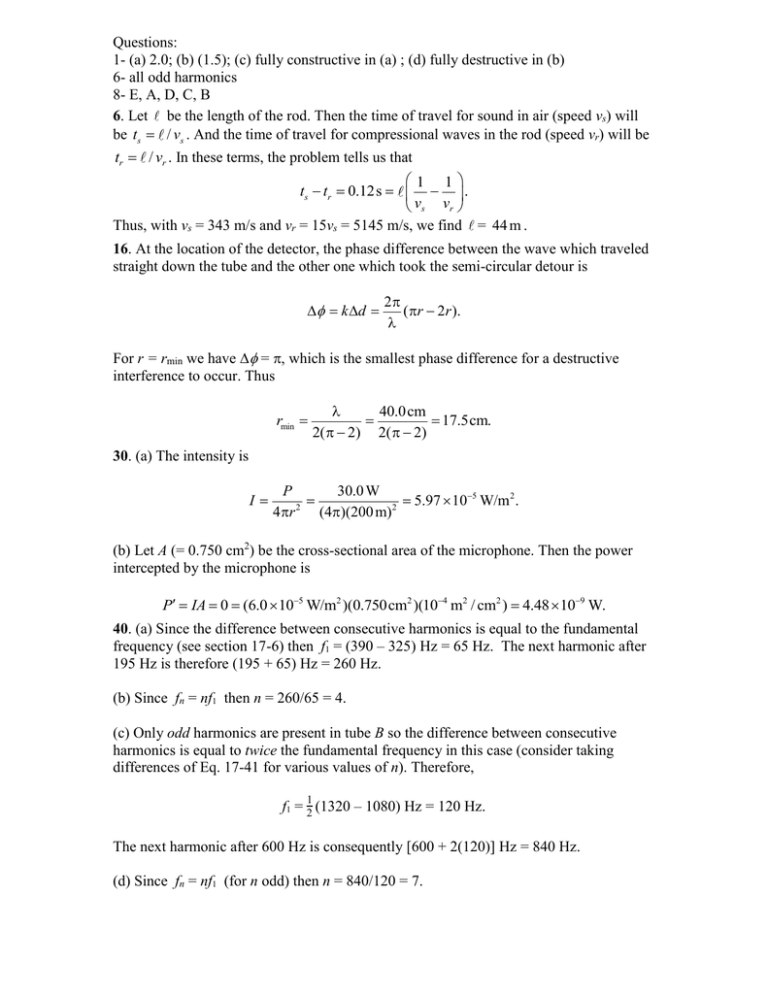
Questions: 1- (a) 2.0; (b) (1.5); (c) fully constructive in (a) ; (d) fully destructive in (b) 6- all odd harmonics 8- E, A, D, C, B 6. Let be the length of the rod. Then the time of travel for sound in air (speed vs) will be ts / vs . And the time of travel for compressional waves in the rod (speed vr) will be tr / vr . In these terms, the problem tells us that 1 1 ts tr 0.12s . v s vr Thus, with vs = 343 m/s and vr = 15vs = 5145 m/s, we find = 44 m . 16. At the location of the detector, the phase difference between the wave which traveled straight down the tube and the other one which took the semi-circular detour is k d 2 ( r 2r ). For r = rmin we have = , which is the smallest phase difference for a destructive interference to occur. Thus rmin 40.0cm 17.5cm. 2( 2) 2( 2) 30. (a) The intensity is I P 30.0 W 5.97 105 W/m 2 . 2 2 4r (4)(200 m) (b) Let A (= 0.750 cm2) be the cross-sectional area of the microphone. Then the power intercepted by the microphone is P IA 0 (6.0 105 W/m2 )(0.750cm2 )(104 m2 / cm2 ) 4.48 109 W. 40. (a) Since the difference between consecutive harmonics is equal to the fundamental frequency (see section 17-6) then f1 = (390 – 325) Hz = 65 Hz. The next harmonic after 195 Hz is therefore (195 + 65) Hz = 260 Hz. (b) Since fn = nf1 then n = 260/65 = 4. (c) Only odd harmonics are present in tube B so the difference between consecutive harmonics is equal to twice the fundamental frequency in this case (consider taking differences of Eq. 17-41 for various values of n). Therefore, 1 f1 = 2 (1320 – 1080) Hz = 120 Hz. The next harmonic after 600 Hz is consequently [600 + 2(120)] Hz = 840 Hz. (d) Since fn = nf1 (for n odd) then n = 840/120 = 7.


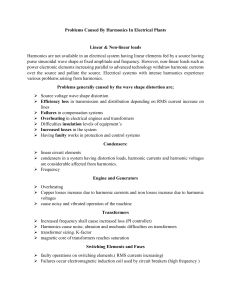
![ )] (](http://s2.studylib.net/store/data/010418727_1-2ddbdc186ff9d2c5fc7c7eee22be7791-300x300.png)



